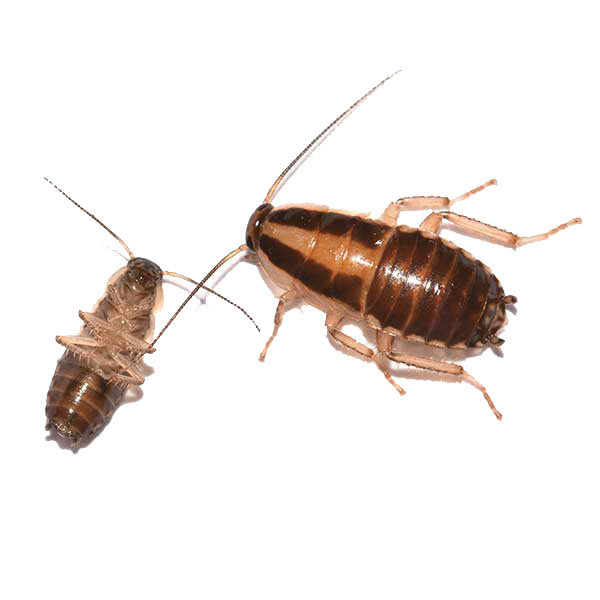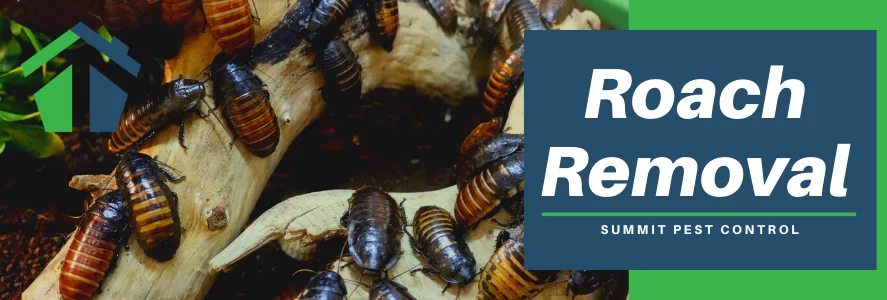Inexpensive and Trustworthy Roach Control Near Me Solutions
Inexpensive and Trustworthy Roach Control Near Me Solutions
Blog Article
Checking Out Numerous Pest Control Approaches to Accomplish Long-Term Success in Managing and Avoiding Problems in Residential Areas
Effective pest control in houses necessitates a diverse method that stabilizes prompt results with long-lasting sustainability. By taking a look at a series of methodologiesâEUR" including environmentally friendly services, chemical options, and Integrated Bug Management (IPM) âEUR" house owners can establish approaches that not only deal with present problems however also stop future occurrences. This expedition reveals the possibility of innovative techniques and arising modern technologies that might redefine standard pest management. What might these innovations require, and how can they transform our understanding of insect control?
Comprehending Bug Control Methods
Although parasites have existed along with humans for centuries, the methods employed to manage them have progressed substantially over time. Comprehending these techniques is crucial for properly taking care of and protecting against infestations in property locations. Bug control strategies can be generally classified into three key techniques: cultural, mechanical, and chemical.
Cultural approaches focus on changing the environment to minimize parasite attraction and breeding. Mechanical control involves physical obstacles and catches to take care of insects directly, such as screens, vacuum cleaners, and sticky traps.
Chemical control remains one of the most widely used methods, involving the application of chemicals to eliminate bugs. While effective, this strategy necessitates careful factor to consider of safety and security, possible resistance development, and environmental impact. Integrated Pest Monitoring (IPM) combines these methods to create an alternative approach, promoting lasting parasite prevention and marginal injury to beneficial organisms. By understanding these different bug control approaches, house owners can make enlightened decisions that advertise effective administration and conservation of their living rooms.
Eco-Friendly Insect Control Solutions
How can property owners successfully handle bug issues while lessening their environmental influence? Environment-friendly parasite control services provide a lasting option to standard methods, focusing on the wellness of both citizens and the bordering ecological community. These options commonly make use of natural components and methods that interfere with bug actions without presenting harmful chemicals right into the setting.
One effective approach is using beneficial bugs, such as ladybugs and lacewings, which prey on common insects like aphids and termites. Furthermore, diatomaceous earth, an all-natural powder made from fossilized algae, can be sprayed in areas where pests prevail, working as a desiccant that hurts insects while continuing to be risk-free for human beings and pet dogs.
Moreover, applying safety nets is critical. roach control near me. House owners can guarantee correct hygiene by sealing access points, preserving tidy home, and handling waste properly. Growing pest-repellent herbs, such as mint and basil, can also prevent unwanted visitors
Eventually, eco-friendly bug control options empower homeowners to address infestations sensibly, cultivating a safer living atmosphere while advertising environmental balance. By embracing these approaches, individuals can add to a much healthier planet while successfully taking care of pest-related problems.
Chemical Pest Control Options
While green options are increasingly popular, there are circumstances where chemical bug control alternatives may be required for effective monitoring of severe invasions. Chemical controls, consisting of pesticides, fungicides, and herbicides, are typically made use of to rapidly lower pest populaces and alleviate damages to homes and yards.
These products can be identified reference into two main classifications: artificial chemicals and natural chemicals. Synthetic chemicals, such as pyrethroids and neonicotinoids, are engineered to target particular bugs, supplying quick knockdown impacts. On the other hand, natural pesticides, stemmed from plant or mineral sources, might provide a more ecologically friendly choice while still supplying reliable outcomes.
Before employing chemical bug control, it is critical to conduct an extensive evaluation of the invasion and determine the certain pest included. This makes sure that the picked chemical is both effective and proper. Furthermore, house owners should follow security guidelines, including correct application strategies and personal safety devices, to reduce health and wellness risks and ecological impact.
Integrated Pest Administration Approaches

Biological control includes the use visit site of natural killers or parasites to manage parasite populaces. Physical controls, like catches or obstacles, can protect against insects from going into homes or destructive crops.
Monitoring and assessment are crucial components of IPM, permitting prompt treatments based upon pest population thresholds. By focusing on safety nets and using a mix of methods, IPM not only addresses current problems but also cultivates long-lasting pest monitoring solutions that protect both human health and the atmosphere. This detailed approach is essential for lasting bug control in property locations.
Arising Technologies in Insect Control
The introduction of emerging innovations in pest control is reinventing the way we handle pest populations, offering innovative options that enhance effectiveness and performance. Advances in accuracy agriculture, as an example, utilize information analytics and sensing unit innovations to keep an eye on pest task directory and ecological conditions, permitting targeted treatments that decrease pesticide usage.
In addition, drones geared up with imaging innovation are being used to check huge locations for problems, offering real-time information that aids in timely decision-making. Furthermore, biotechnology is playing a critical role, with the advancement of genetically modified microorganisms (GMOs) made to minimize parasite populaces while protecting valuable species.

Lastly, clever traps and monitoring gadgets equipped with IoT abilities make it possible for property owners and parasite control experts to receive instantaneous notifies concerning parasite activity, facilitating punctual activity. Jointly, these arising innovations not only improve parasite monitoring end results however likewise add to environmental sustainability by lowering dependence on conventional chemical treatments.

Conclusion
To conclude, efficient bug control necessitates a diverse approach that incorporates cultural, mechanical, and chemical methods. Stressing environmentally friendly options and Integrated Parasite Monitoring can lead to sustainable techniques that not just alleviate infestations but also enhance the ecological balance within domestic areas. By embracing innovative technologies and embracing preventive measures, property owners can promote much healthier environments while minimizing reliance on hazardous chemicals. The assimilation of these approaches is crucial for achieving long-lasting success in pest monitoring.
Report this page